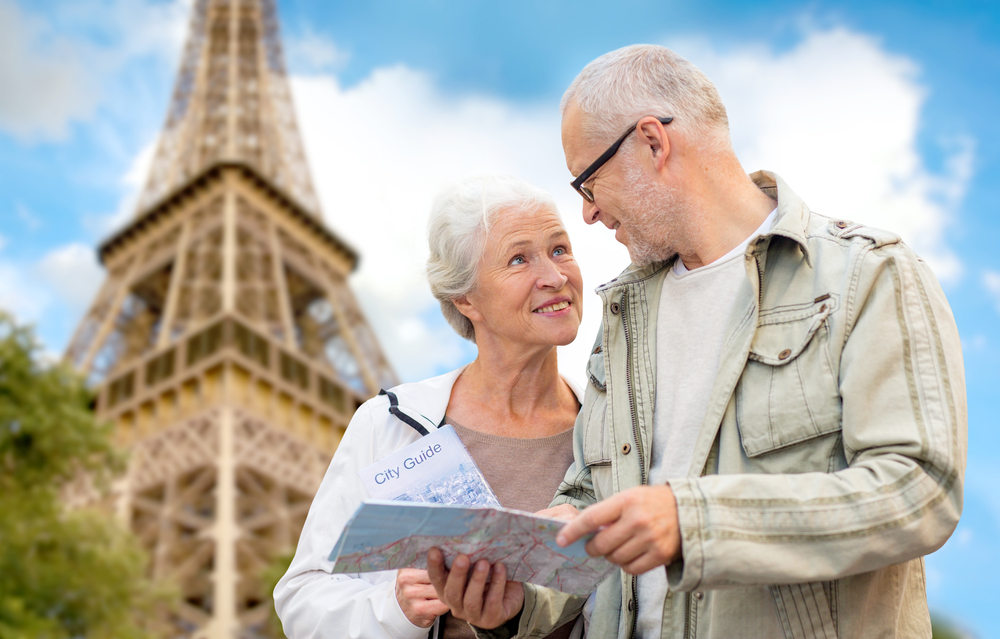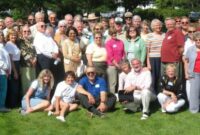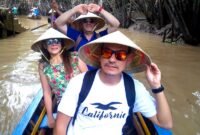Elderly travel tours offer a unique opportunity for older adults to explore the world, creating lasting memories and enriching their lives. These tours cater to diverse needs and preferences, encompassing various activity levels, travel styles, and destinations. Whether it’s a relaxing cruise through the Caribbean, a culturally immersive journey through Europe, or an adventurous exploration of national parks, carefully planned itineraries ensure a comfortable and fulfilling experience for every traveler. We’ll explore the different types of tours available, essential planning considerations, accessibility options, and safety measures to guarantee a worry-free and enjoyable trip.
This comprehensive guide delves into the specifics of planning and executing successful elderly travel tours, covering everything from pre-trip health consultations to managing potential health issues during travel. We’ll examine accessible transportation options, inclusive accommodations, and marketing strategies tailored to this demographic. Finally, we’ll highlight destinations specifically designed for the comfort and enjoyment of senior travelers, emphasizing accessibility and safety.
Marketing and Promotion of Elderly Travel Tours
Successfully marketing elderly travel tours requires a nuanced understanding of this demographic’s needs and preferences. Effective strategies go beyond simply offering discounts and must focus on building trust, highlighting value, and showcasing the enriching experiences these journeys provide. This involves careful consideration of marketing materials, distribution channels, and the overall messaging employed.
Marketing Materials for Elderly Travelers
Brochures and online advertisements should feature clear, large fonts and ample white space for easy readability. Images should depict active, engaged seniors enjoying the tour’s activities and destinations, avoiding stereotypical portrayals of frailty or dependence. For example, instead of a picture of a senior sitting on a bench, show a group of seniors actively participating in a guided walking tour or enjoying a local cultural event. Descriptive language should emphasize comfort, safety, and convenience. Phrases such as “carefully planned itineraries,” “accessible accommodations,” and “expert local guides” resonate strongly. Brochure copy should highlight aspects such as manageable pacing, convenient transportation, and opportunities for social interaction. Consider including testimonials from previous participants, showcasing their positive experiences and building credibility. A sample brochure description might read: “Experience the charm of Tuscany: Enjoy leisurely paced walking tours of picturesque villages, savor authentic Italian cuisine, and relax in comfortable, accessible hotels. This tour is designed for active seniors who appreciate comfort and cultural immersion.”
Reaching Potential Elderly Travelers
Print media remains a powerful channel for reaching older adults. Advertisements in publications like AARP The Magazine or senior-focused newspapers and magazines can effectively target this demographic. Online advertising, however, offers a wider reach and more targeted options. Using platforms like Facebook and Google Ads with precise demographic targeting (age, interests, location) can deliver advertisements to potential travelers with high accuracy. Consider partnering with senior centers, retirement communities, and travel agencies specializing in senior travel to distribute marketing materials and promote tours directly to their clientele. Furthermore, engaging content on social media platforms, showcasing stunning visuals and testimonials, can build brand awareness and generate interest. Email marketing campaigns, utilizing segmented lists based on interests and past travel patterns, can nurture leads and drive bookings. For example, a targeted Facebook ad could feature a visually appealing image of a senior couple enjoying a scenic vista from a cruise ship, accompanied by text highlighting the inclusive nature of the cruise and the ease of travel.
Imagery and Language Resonating with Elderly Travelers
Avoid overly youthful or energetic language. Instead, opt for respectful and reassuring tones that emphasize comfort, security, and ease of travel. Visuals should depict active and engaged seniors in realistic settings, avoiding stereotypes of aging. For instance, instead of using images that portray seniors as frail or dependent, showcase seniors enjoying activities such as gardening, playing games, or engaging in cultural experiences. Focus on showcasing the enriching aspects of travel – the opportunity to learn, connect with others, and create lasting memories. Using images of diverse seniors participating in tour activities conveys inclusivity and broadens the appeal. Emphasize the value proposition clearly – the benefits of the trip, including relaxation, cultural enrichment, and social connection, should be explicitly communicated. For example, an image showing a group of diverse seniors laughing together during a cooking class conveys a sense of community and fun.
Final Review
Planning an elderly travel tour requires meticulous attention to detail, ensuring the safety, comfort, and enjoyment of every participant. By carefully considering factors such as health concerns, accessibility needs, and destination suitability, tour operators can create truly enriching experiences. This guide has provided a framework for understanding the nuances of this specialized travel sector, emphasizing the importance of inclusive planning and a focus on the unique needs of older adults. With thoughtful preparation and a commitment to accessibility, unforgettable and enriching travel experiences are within reach for all.




